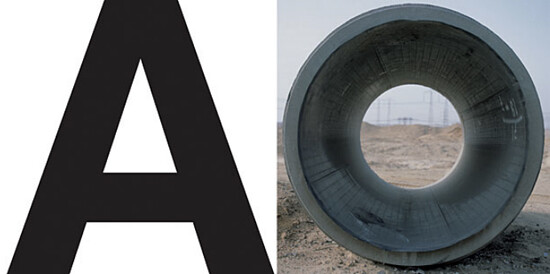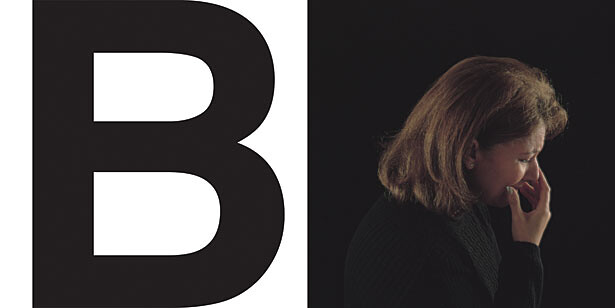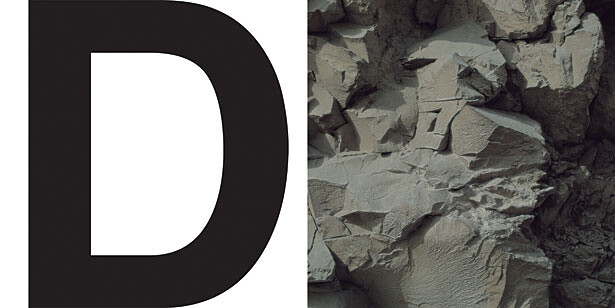To read is to resuscitate ideas buried in paper. Each word is an epitaph.
—Simón Rodríguez 1
I started learning to write and read at age six and received my first serious art education when I was 14. These periods mark two points in my biography at which my instincts for exploration were seriously curtailed. Instead of being guided in a search to name unnamed things, I was forced to learn the names of known things.
These memories truly trouble me—but that’s not all. They also make me wonder: Why were reading and writing taught separately from drawing and looking? Why was the first pair considered an obligation for everybody and the second reserved for a later vocational choice? Why was the system designed to formulate answers to other people’s questions rather than pose my own?
Turning to look at the present, other things bother me as well, for example: Why is good art an elitist affair and bad art a more popular one? Why are most incentives to improve one’s work, or indeed achieve anything, external to the learner and not embedded in the learning? Are these questions a symptom of bad pedagogy? And is a solution to be found in a better approach to pedagogy?
Beyond learning how to read and write, I’ve never paid much attention to literacy until very recently. I always presumed that the knowledge of reading and writing was something of absolute value, lacking any internal contradictions. Like many, I associated illiteracy with ignorance and socially dysfunctional traits. Focusing on art, I took no notice of the New Literacy Studies movement and the concept of “multiliteracies” that emerged during the nineties. In thinking about art education and using terms like “visual literacy,” I gave only superficial thought to the possibility that art and literacy are two connected sub-categories of coding and decoding, and more in general to the subject of the translation of ideas from one code into another. Telepathy would be my ideal instrument for all this, but I have never managed to make it work. Beyond my personal shortcomings in this area, telepathy also poses problems of storage and retrieval.


A Single Letter
With “telepathy banks” out of the question, I have considered the alternative of compressing all knowledge into one letter. Literacy then would be a snap, like taking a pill, and there would be no need to keep art separate from it. We have not one but twenty-six letters in the basic modern Latin alphabet, which is still impressive, given how much knowledge, evocation, and inquiry can be put into those scribbles. Add to that the limited repertoire of signs available in art, and a lot of ground is covered.
The single-letter idea is closer to Borges’ Aleph than to any letter in an alphabet, and it may sound a little too mystical. In any case, I once mentioned this idea to someone who informed me that the Dzochen Tibetan tradition already has it. It is a special letter “A” that serves as a symbol for the “body of light” and is said to contain all primordial knowledge. Later I discovered that this single-vessel concept is also recognized in secular theory. Talking about algorithms, mathematician George Chaitin describes “elegant programs” as “the optimal compression of its output, it is the scientific theory for that output, considered as experimental data.”2
In art (including creative writing) compression is central to power and effect, encompassing not only empirical data, but also, and perhaps, particularly, the non-experienced and the unknown—indeed, that is what often makes art interesting. We are talking about a form of compression that satisfies Chaitin’s conditions, and a decompression that surpasses them. In art, the decompression resorts to evocations and the completion of the work takes place in the viewer’s experience.
There is something else implicit in Chaitin’s definition: the program (or the sign, or the coded message) is a meeting point where writer and artist encounter reader and viewer. The sign—or combination of signs—is therefore not only a product or an object; it is also a space of passage. In this sense, perhaps one of the faulty notions picked up in the course of my schooling was that a text or a piece of art is a thing and not a place. And further, that this thing exists only in order to tell me about other, already known things.
This would serve to explain why there are two types of pedagogy: one directed at the transmission of knowledge, and another—used less often—aimed at developing creativity. And there are separate social attitudes attached to each: one of submission to a given order of things, and another—less often found—fostering the critique of that order. This in turn also explains why, when we want to give primacy to the search for unknown things, we are forced to unlearn a lot of what we have previously learned.


Protocols
Teaching a craft is easy. Craft is a relatively closed system, dealing with objective data in a given order. It only requires time and patience. But the separation of craft from meaning comprises a de facto indoctrination: In disciplines like history or literature, or in the social sciences, when the memorization of facts is divorced from interpretation, a subtle form of coercion takes place. The student is left not only ignorant of the underlying ideologies, trained to think it is possible, even desirable, to be apolitical, when in fact that is itself a political position. Meaningless craft, similarly, has its own meaning. It equally reflects an ideology, and a superficial one at that—it is the product of the unexamined assumption that this certain way of teaching is non-ideological. Protocols—the rules that guide how an activity should be performed—share this same ideology of non-ideology. That is why this kind of pedagogy emphasizes training and not education.
Teaching adheres to tight protocols—codes that define the space within which teaching is performed. The most basic protocol at work here is doubtless the separation of teaching from learning: a teacher giving information on one side, students receiving it on the other. The protocol-space represents this preset distribution of power, and only those modes of pedagogy that fit that space and comply with that distribution can be used.
Protocols are not necessarily rational, and if they are they are slow to be updated, they may outlive their original rationale. In the forties, when I was in grade school in Uruguay, we often had to read aloud in front of the class, standing at the blackboard facing the class. It was a formal activity for which we were forced to use Castilian pronunciation. Normal speaking was declassed because protocol determined that Castilian was the refined, correct, and classy way to pronounce while reading to an audience. A leftover from Spanish colonization two centuries earlier, it was a protocol nobody had bothered to revise. 3
Four decades later I was teaching in a U.S. college and one day it was my turn to take minutes in a meeting of department chairs. Bored, I decided to write descriptive minutes. I not only quoted, but also described the demeanor and expressions of those being quoted. I breached secretarial protocol and, my realism interpreted as caricature, elicited indignation.4 The protocol of secretarial work demands machine-like, objective anonymity, without the possibility of personal accountability.
In my grade school, protocol forced us to be ridiculous. In my meeting, protocol prohibited exposing the ridiculousness of others.5 And in spite of stated assumptions, both protocols were highly ideological in that they reduced the possibilities for our expression and revelation, fitting us into an institutional mold.
Protocol is an important word here. Because protocols are created by or associated with power (somebody composes the rules, somebody implements them), to focus critically on protocol helps us to see where power is placed, and what it does. Therefore, inasmuch as teaching follows protocol in its general ideology and in its concrete representation (expressed in the form of syllabi), it can be seen as a form of colonization. Colonization and the teacher as colonizer, therefore, can be used as negative metaphors for education.


The Urgency to Communicate
Literacy is primarily conceived of as a “known thing” to be somehow handed over. The teacher is literate and the learner is not. The knowledge, mostly defined as a skill, is transmitted from one to the other and the job is done. Over time, however, ideas about literacy have become increasingly complex. With the changes in capitalism during the last half century, different concepts have emerged. Ideas about literacy are no longer limited to traditional methods of strict skill acquisition, with a choice between phonic approaches or comprehensive understanding of meanings. With resistance against social and economic exploitation came the recognition of a need for political awareness and sensitivity to local needs. Attempts to analyze literacy had to factor in the environment of the learner. Paulo Freire politicized such study by showing how the development of literacy was connected to the social conditions that cause and maintain illiteracy. Recent research by Ana Lúcia in the state of São Paulo, Brazil, adds a psychological dimension to the social situation, revealing that the strongest feelings of adults who acknowledged being illiterate are “humiliation and impotence.”6 This, among other things, makes it difficult to identify those in need.
Meanwhile literacy has not remained limited to traditional reading and writing. According to Robert Reich, for the last twenty-five years routine work as a percentage of all work is diminishing, while work requiring creativity and abstract analysis is increasing. Consequently an elite form of literacy has developed: that of the “symbol analysts.” And this new complexity has created a number of new social classes and forms of illiteracy not yet fully registered.
All this may have enriched pedagogical theory, but the classroom situation has not changed very much.7 In a world increasingly organized by algorithmic thinking, symbol analysis is still considered a form of specialization. Education continues to function primarily as a social lubricant, and basic literacy continues to be an essential part of the lubrication process. The regrets of functionally illiterate individuals reflect this situation. Their incentive to learn how to read and write comes from the prospect of being able to attend to their business in the bank or take a bus, and not from equipping themselves for a better communication or inquiry.8 In spite of many efforts by progressive thinkers, the classroom has been kept free of critical inquiry and of any challenge or exploration of the unknown.
Basic literacy education and basic art education tend to start from a common ground. In their own ways, they define the starting point as knowledge of the ABCs of language and then proceed to develop the skills to use them. The assumption is that the primordial core of a language lies in irreducible discrete units that will later be strung together, rather than in the urgency to communicate. In literacy, the units are literally the letters. In art, according to aesthetic ideology, they are life drawing, abstract composition, and so forth. But in literacy as in art, the reason for learning them is to be revealed only after the achievement of proficiency. There may be a strong reason for wanting to learn (improvement of social class, art historical fame), but the target usually lies outside and beyond the development of the skill. Meanwhile children are able to assemble their own language with minimal rules while playing charades or drawing freely. When language acquisition does serve the urgency to communicate, children use the necessary tools in an integrated manner, without a classroom, and without any noticeable effort.


In spite of the common aspects shared between skills-through-building-blocks and insulation from communication goals, even in the most traditional pedagogies basic literacy and basic art part ways very quickly. One of the reasons for this is that literacy prioritizes reading over writing, while art stresses making over seeing. As James Paul Gee points out, reading is understanding and writing is producing.9 This puts reading in a category together with art appreciation and writing in a category with art making. Or, more schematically, one category refers to decoding while the other refers to coding.
Art and literacy therefore come to be considered as completely separate entities. Reading is the decoding of writing and thus together they presumably constitute a distinct and inseparable couple. Given the general expectations of the learner, literacy leads to an understanding of what other people have done or discovered. Meanwhile, the expectation for art (including creative writing) is that it leads to an ability to handle urgent needs of expression and to explore things yet unknown. The consequence is that society expects the written word to inform, while art is expected to reveal. Where they curiously find common ground is in how, despite differing definitions and expectations, both arrive at their destination only through proficiency.
This common ground—making proficiency the foundation—is a curse for both. In the case of literacy, the student is trained to see mastery of the craft of written language as the definitive route to freedom of expression, when the code itself embeds limits to possible meanings. In the case of art, the student is trained in the code of the craft, but without the luxury of being able to think that mastery of the craft will lead to success. For the student of art, the messages are mixed, even contradictory. On the one hand, craft is considered separately from meaning. On the other, in the world of art, the aspiring student knows well that the only way to achieve any recognition is by breaking away from the protocols of craft to find an identifiable voice. The student learns how to do things but not how to dream or speculate. This is not solely a misconception, but also a sign of pedagogical laziness. The bar is placed so as to confirm and maintain the lowest level, rather than to identify the learner’s energy and employ it to raise the bar. As P. D. James says, seething imagination is being disciplined.10
Simón Rodríguez, “Consejos de amigo: Dados al Colegio de Lacatunga” (ca. 1845), in Obras Completas (Caracas: Ediciones del Congreso de La República, 1988), 2:45.
Gregory Chaitin, Meta Math! The Quest for Omega (New York: Pantheon Books, 2005), 125.
The relation between language and social class of course continues to inform distinctions such as “well spoken” and “vulgar.” Recently a Uruguayan presidential candidate (a former president of the senate and minister of agriculture who had been imprisoned for twelve years as a “subversive”) was derided in an editorial for his language: “(He) introduced onto the political battlefield a language completely alien to our traditions. Formally, he resorted and continues to resort to vulgar expressions, inappropriate to a life of cultivated relations.” (Introdujo en la lid política un lenguaje completamente ajeno a nuestras tradiciones. Formalmente, recurrió y recurre a expresiones vulgares, impropias de una vida de relación culta.) El País, June 16, 2009.
In my minutes I had described the chair of the meeting as chewing her lunch while she was expressing her thoughts. I concede that I didn’t like this person.
The incident came back to mind when I read Elsie Rockwell’s “The Uses of Orality and Literacy in Rural Mexico: Tales from Xaltipan,” in The Making of Literate Societies, ed. David Olson and Nancy Torrance (Malden, MA: Blackwell Publishers, 2001).
“Analfabeto se sente impotente, diz pesquisadora,” Folha de São Paulo, June 14, 2009.
As early as the late 1980s it was already established that the use of computers, by placing emphasis on e-mail correspondence and other activities separate from skill acquisition, sped up the literacy process. See Jo Anne Kleigfen, “Computers and Opportunities for Literacy Development,” ERIC/CUE Digest 54, →.
Ibid.
James Paul Gee, What Video Games Have to Teach Us About Learning and Literacy (New York: Palgrave Macmillan, 2007), 33.
PD James, The Murder Room, Penguin Books, London 2003, p.12
→Continued in issue #11: ALPHABETIZATION, Part Two: Hegemonic Language and Arbitrary Order.
